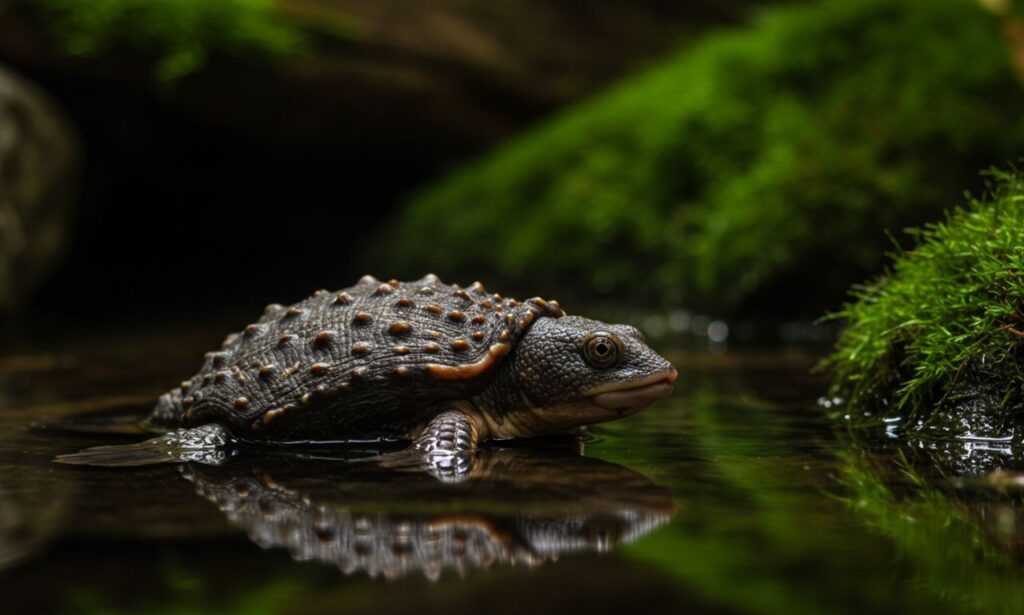The chelone animal, commonly referred to as a turtle or tortoise depending on its habitat, represents an ancient and fascinating group of reptiles. The name “Chelone” stems from Greek mythology and is used scientifically to refer to creatures of the Cheloniidae and Testudinidae families. These animals are well-known for their distinctive hard shells and slow but deliberate movements.
Understanding the chelone animal requires an exploration into its evolutionary background, physiological features, environmental adaptations, and ecological roles. This article delves into each of these aspects to provide a comprehensive picture of one of nature’s most iconic reptiles.
Historical and Mythological Significance of Chelone Animal
The name chelone animal has its roots in ancient mythology. In Greek legends, Chelone was a nymph who refused to attend the wedding of Zeus and Hera and was punished by being turned into a turtle. This myth reflects the enduring presence of turtles in human culture and their symbolic importance in various civilizations.
Over centuries, the chelone animal has been a symbol of wisdom, longevity, and stability, appearing in Chinese, Native American, African, and Hindu traditions. Many cultures regard the turtle’s shell as a symbol of protection and the animal itself as a bearer of the world.
Biological Classification of Chelone Animal
The cheloneanimal belongs to the order Testudines, which includes:
-
Turtles (generally aquatic or semi-aquatic)
-
Tortoises (primarily land-dwellers)
-
Terrapins (brackish water inhabitants)
These reptiles are classified based on their shell structure, habitat, and physiology. While “Chelone” is often used colloquially or mythologically, scientifically they are categorized under families like Cheloniidae (sea turtles) and Testudinidae (tortoises).
Anatomy and Physiology of Chelone Animal
One of the most distinctive features of the chelone animal is its hard shell, which serves both as protection and as a structural part of the skeleton. The shell comprises two main parts:
-
Carapace (the top dome)
-
Plastron (the bottom shield)
Unlike other reptiles, the chelone’s ribs are fused with the shell, making it an integral part of its body. This adaptation provides defense against predators but limits flexibility.
Chelone animals are cold-blooded and rely on external temperatures to regulate their body heat. Their respiratory and digestive systems are adapted for both land and aquatic lifestyles, depending on the species.
Habitat and Distribution
The cheloneanimal can be found in a variety of environments across the globe. Their adaptability allows them to thrive in:
-
Oceans (sea turtles)
-
Freshwater rivers and lakes
-
Dry deserts and scrublands (tortoises)
-
Wetlands and marshes
Each species has evolved unique behaviors and physical traits suited to its habitat. For example, sea turtles have flipper-like limbs for swimming, while tortoises have sturdy, elephantine legs for terrestrial movement.
Diet and Feeding Habits of Chelone Animal
The diet of a chelone animal varies based on its environment and species. Some are herbivorous, others omnivorous, and a few are strictly carnivorous.
Common diets include:
-
Sea Turtles: Jellyfish, seaweed, algae, sponges
-
Freshwater Turtles: Insects, small fish, aquatic plants
-
Tortoises: Grasses, fruits, vegetables, cactus
Feeding habits also affect their role in the ecosystem, as many chelone animals help control insect populations, spread seeds, and clean up decaying matter in aquatic systems.
Reproduction and Lifecycle of Chelone Animal
The chelone animal has a unique and fascinating reproductive cycle. Most species are oviparous, meaning they lay eggs. Key reproductive features include:
-
Nest Digging: Females dig nests in sand or soil
-
Egg Laying: Clutches can range from 1 to 100+ eggs
-
Incubation: Takes several weeks; temperature can determine the sex of hatchlings
-
Hatchlings: Instinctively move toward water or vegetation for survival
One of the greatest dangers to chelone animal offspring is predation and habitat destruction. Conservation programs often focus on protecting nesting sites.
Ecological Importance of Chelone Animal
The cheloneanimal plays several vital roles in its ecosystem:
-
Seed Dispersers: Especially tortoises, who help plant regeneration
-
Scavengers: Aquatic turtles keep water clean by consuming dead animals
-
Prey and Predator: Provide food for birds, crocodiles, and mammals
-
Bioindicators: Their presence or absence can indicate environmental health
Due to these roles, the decline of chelone animals has far-reaching consequences for biodiversity and habitat stability.
Threats Facing
Despite their ancient lineage, the chelone animal faces multiple modern threats:
-
Habitat Loss – Urban expansion, deforestation, and wetland drainage
-
Pollution – Plastic ingestion and water contamination affect sea turtles
-
Climate Change – Affects nesting beaches and hatchling survival
-
Illegal Wildlife Trade – Shells and meat are still traded in some regions
-
Fishing Bycatch – Many sea turtles die entangled in fishing gear
Conservation Efforts
Global and local organizations have stepped in to protect chelone animal populations. Key efforts include:
-
Marine Protected Areas (MPAs)
-
Captive Breeding Programs
-
Nest Protection Initiatives
-
Education and Awareness Campaigns
-
Legislation: CITES and other wildlife protection laws
Community involvement has also proven crucial. In areas where locals are engaged in ecotourism or conservation, chelone animal survival rates have significantly improved.
Chelone Animal in Captivity and Research
Chelone animals are often studied for their longevity, resilience, and behavior. They are also popular in zoos, aquariums, and educational centers. However, ethical concerns remain about keeping them in captivity:
-
Space Limitations
-
Improper Diet
-
Stress and Sickness
Well-managed sanctuaries and rescue centers aim to balance education with conservation, helping people understand the significance of these animals.
Interesting Facts About Chelone Animal
-
Some chelone animals can live for over 150 years.
-
Sea turtles navigate using the Earth’s magnetic fields.
-
The Galápagos tortoise can weigh over 400 kg.
-
A chelone animal’s shell has nerve endings and can feel touch.
-
Hatchlings emerge from eggs using a temporary egg tooth to break the shell.
Future of Chelone Animal: What Can We Do?
Protecting the chelone animal is not just the job of scientists or conservationists. Every individual can contribute:
-
Reduce plastic usage
-
Support wildlife-friendly tourism
-
Report illegal wildlife activities
-
Educate others about turtle conservation
-
Participate in beach cleanups and nesting patrols
With collective action, we can ensure that the chelone animal continues to thrive for generations.
Conclusion
The cheloneanimal, with its timeless grace and ecological importance, is a testament to the resilience of life on Earth. From ancient myths to modern conservation, these creatures remind us of the delicate balance between humans and nature. Understanding their biology, appreciating their role in the ecosystem, and taking responsibility for their protection are steps toward a more sustainable and respectful coexistence.







